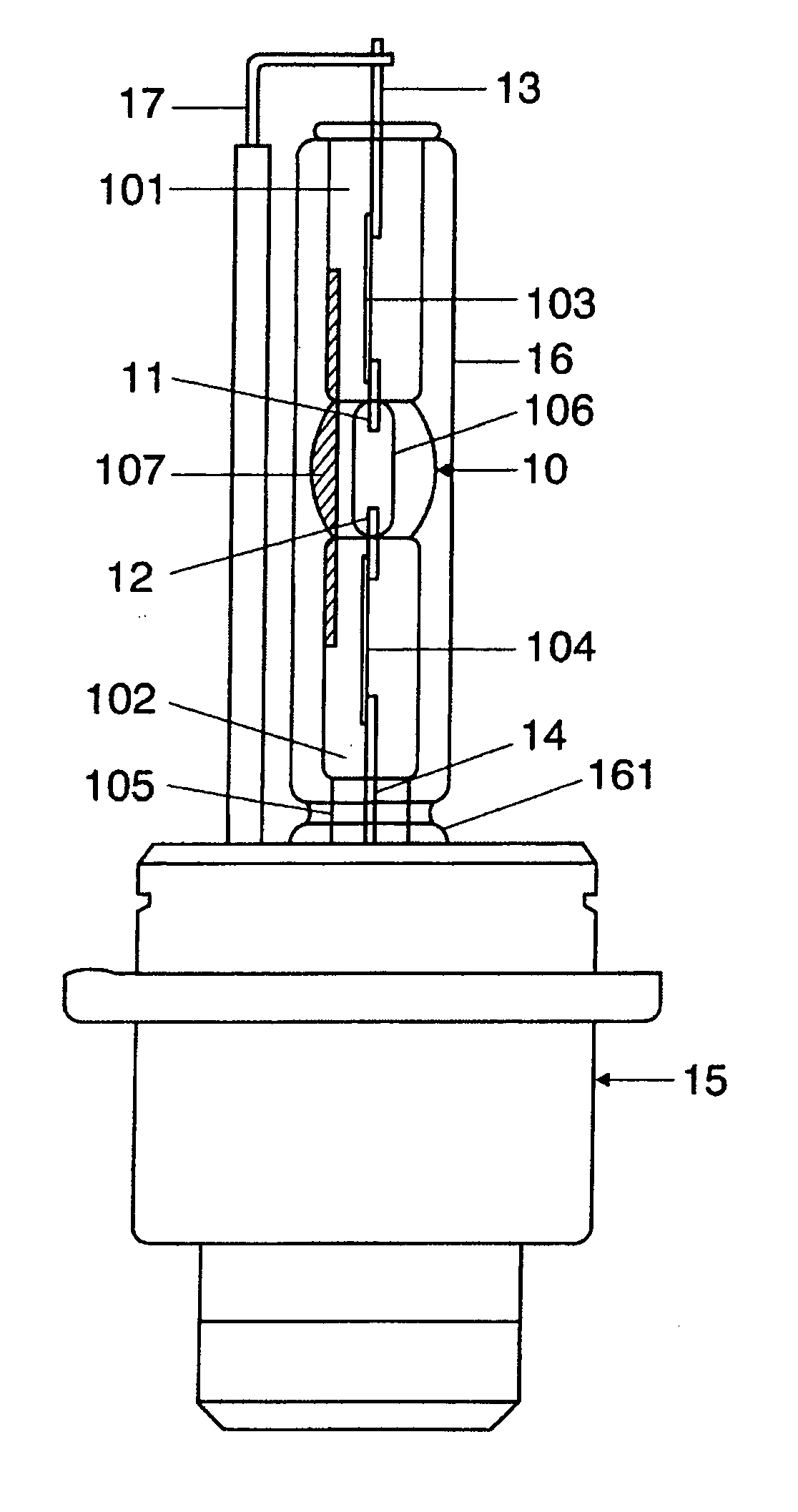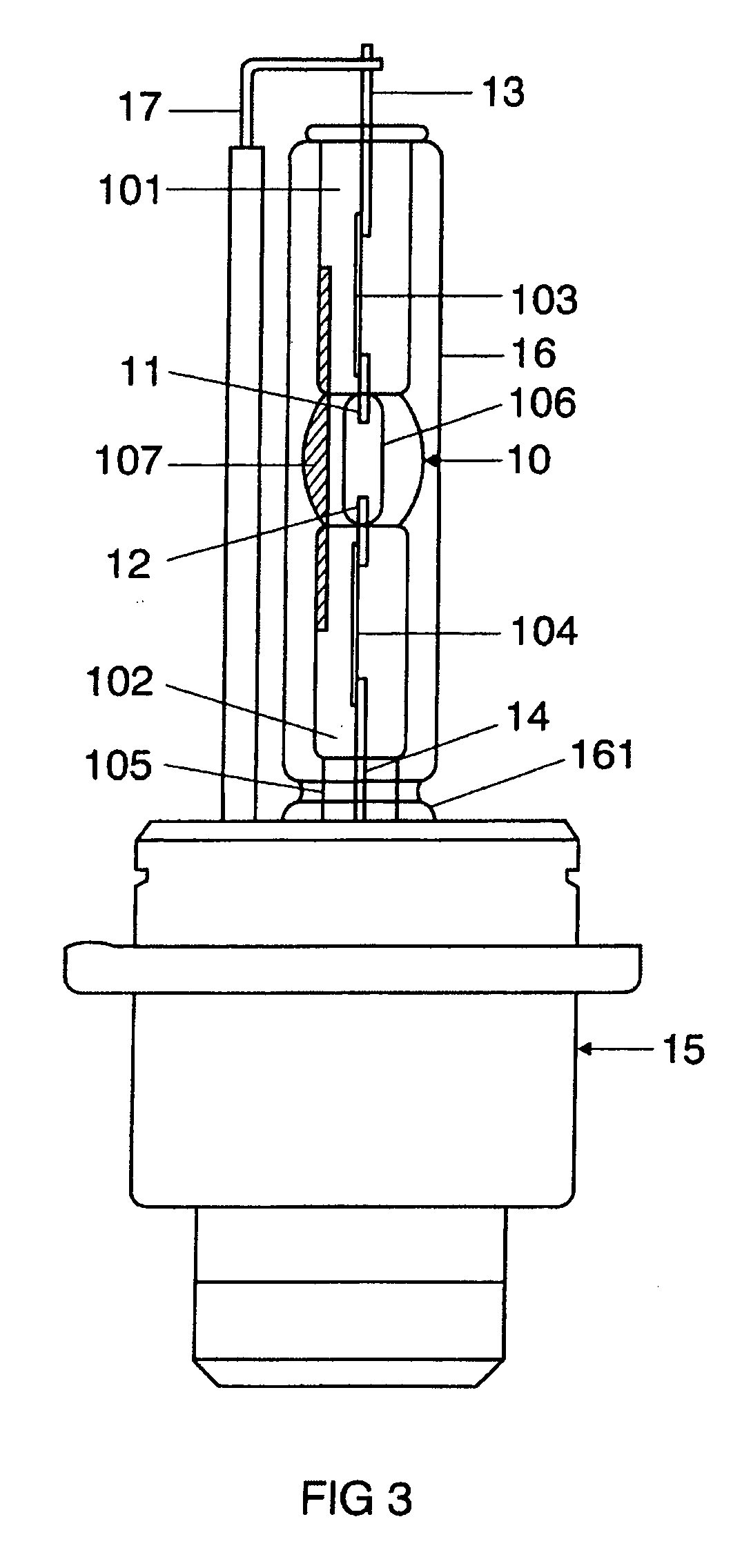High-pressure discharge lamp
a high-pressure discharge and lamp technology, applied in the direction of gas discharge lamp details, electric discharge tubes, electrical apparatus, etc., can solve the negative effect of the optical properties of the headlight system, and achieve the effect of improving the starting capacity
- Summary
- Abstract
- Description
- Claims
- Application Information
AI Technical Summary
Benefits of technology
Problems solved by technology
Method used
Image
Examples
Embodiment Construction
[0024] The preferred exemplary embodiment of the invention illustrated schematically in FIG. 3 is a mercury-free halogen metal-vapor high-pressure discharge lamp having an electrical power consumption of approximately 35 watts. This lamp is envisaged for use in a vehicle headlight. It has a discharge vessel 30 made from quartz glass which is sealed at two ends and has a volume of 24 mm3, in which an ionizable filling, comprising xenon and halides of the metals sodium, scandium, zinc and indium, is enclosed in a gas-tight manner. In the region of the discharge vessel 106, the inner contour of the discharge vessel 10 is circular-cylindrical, and its outer contour is ellipsoidal. The internal diameter of the discharge space 106 is 2.6 mm and its external diameter is 6.3 mm. The two ends 101, 102 of the discharge vessel 10 are each sealed by means of a fused molybdenum foil seal 103, 104. Located in the interior of the discharge vessel 10 are two electrodes 11, 12, between which the dis...
PUM
 Login to View More
Login to View More Abstract
Description
Claims
Application Information
 Login to View More
Login to View More - R&D
- Intellectual Property
- Life Sciences
- Materials
- Tech Scout
- Unparalleled Data Quality
- Higher Quality Content
- 60% Fewer Hallucinations
Browse by: Latest US Patents, China's latest patents, Technical Efficacy Thesaurus, Application Domain, Technology Topic, Popular Technical Reports.
© 2025 PatSnap. All rights reserved.Legal|Privacy policy|Modern Slavery Act Transparency Statement|Sitemap|About US| Contact US: help@patsnap.com



